Now we have further confirmation of those suspicions. Noted wildlife ecologist Craig C. Downer has just completed a lengthy and very enlightening study on the BLM wild horses in Oregon and their management on publicly-owned wild horse Herd Management Areas (HMAs) that were established under Act of Congress in the1971 Wild Burro and Horse Protection Act.
By: William E. Simpson II
Contributor
Latest Science Highlights Wild Horse Over-Population Myth & BLM Mismanagement
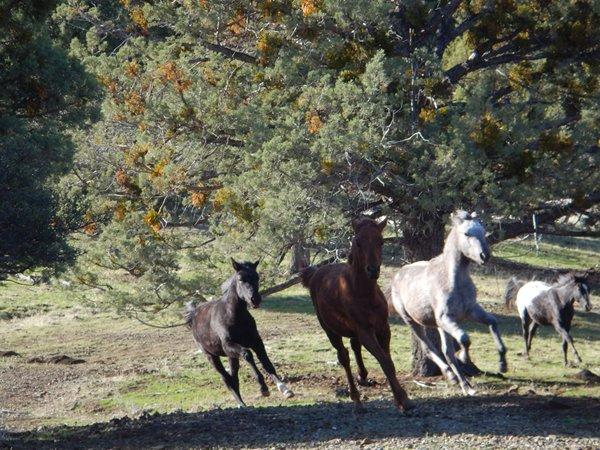
The critics of the BLM and their Wild Horse and Burro Program who number in the thousands (at least), have long-held that there were more myths being spun about wild horses than truths. Added to which the BLM engages in management methodologies that seem to intentionally and needlessly place wild horses at odds with livestock ranchers. Why?
The Curator of vertebrates at the prestigious American Museum of Natural History, Professor Ross MacPhee is just one of that indelible multitude and has made his position on the BLM’s canards very clear as we read here.
Now we have further confirmation of those suspicions. Noted wildlife ecologist Craig C. Downer has just completed a lengthy and very enlightening study on the BLM wild horses in Oregon and their management on publicly-owned wild horse Herd Management Areas (HMAs) that were established under Act of Congress in the1971 Wild Burro and Horse Protection Act.
This same report is being provided to the administrative heads of BLM, USFS and DOI in the public interest of proper management of the legendary and majestic American wild horses.
For those people who find ignorance as problematic, this just-released scientific study on Oregon’s wild horses (including those on the Oregon-CA border) will be most informative, and is available at this link:
As it will be known from this new report, not only are wild horses being mismanaged, their population numbers are literally so low that the notion of ‘overpopulation’ as is falsely claimed by the BLM and others, is little more than an outrageous falsehood.
In one of my recent articles titled Wildlife Wildfire and Wild Horses – Undeniable Evolutionary Connection some additional myths about wild horses are delineated for interested readers. Hopefully readers will make contact with local, state and federal officials and politicians and demand corrective action for this malfeasance by the BLM as well as by their associates at the USFS who also manage some wild horses.
The public has been mislead by the BLM to the tune of hundreds of millions of dollars being spent on reckless and improper management of America’s wild horses. Worse yet, in many cases the BLM is the source of misinformation, and in many instances knowingly allow other agencies to repeat and print incorrect information about wild horses and their management by the BLM.
Frankly, there are very few qualified wildlife biologists or ecologists who specialize in wild equine behavioral ecology in the world today. It is in fact a specialty because wild horses are in many ways different than domestic breeds of horses. Craig Downer has the prerequisite knowledge to weigh into this issue.
A few of the many examples of the myths that have long been promulgated by the BLM and wild horse management officials in other government agencies, including the USFS, are cited as follows:
1) Myth: Wild horses cannot graze on rough or steep terrain:
Truth: This first myth is manifestly untrue. As someone who lives among wild horses in a naturally operating ecosystem, I regularly observe and document wild horses browsing on steep rocky (volcanic talus) mountainsides, as we see in these two photos:
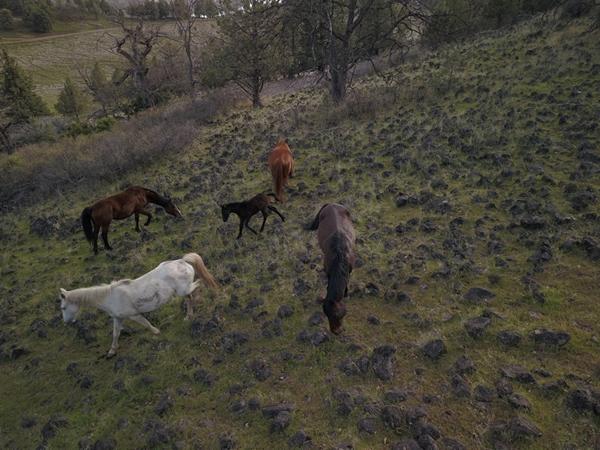

2) Myth: Wild horses don’t eat brush or woody plants, only sweet grass and hay.
Truth: Wild horses in fact do browse a diet that is widely distributed among many plants in the biomes of North America where they have existed for millennia, and maintain symbiotic mutualism with the plants eaten by spreading their seeds in many cases. This canard as to diet has been repeated often by BLM wild horse and burro managers who do not have the requisite field experience in wild horse behavioral ecology, so they ignorantly substitute and impose domestic breed behavioral ecology upon wild horses, which is not consistent with fact. Wild horses do in fact eat woody plants as we see in the very short video of a wild mare browsing on some white oak debris that was blown-down out of a tree top: https://drive.google.com/file/d/0B5zON7zDatuqZG9sOWFxdVFuNWc/view
3) Myth: Wild horses consume forage needed for rebuilding depleted deer herds.
Truth: This myth was spawned into the hunting industry by some people in and around the BLM and USFS. In the detailed peer-reviewed study by Hansen, R.M., Clark, R.C., & Lawhorn, W. 1977 titled ‘Foods of Wild Horses, Deer, and Cattle in the Douglas Mountain Area, Colorado’, we read in the first paragraph that the dietary overlap of Deer and Wild horses is just 1%.
4) Myth: Livestock should be exclusively used for grazing ground-fuels that are the genesis of catastrophic wildfire.
Truth: The reality is that livestock are useful as wildfire ground-fuel grazers in and around grazing areas that can be actively managed with mechanical means for soil conditioning and re-seeding.
This is because livestock (cattle and sheep) are an invasive species and via their grazing, which does overlap more heavily with deer (takes food off their table), they will strip native plants and their seeds from any area where they graze.This fact is a function of their being ruminants with a very efficient digestive system (complex stomach). The opposite is true for wild horses, which have a monogastric (single stomach) digestive system that passes both humus and undamaged/undigested seed back onto the soils, thereby complimenting and re-seeding the soils where they graze, which is of particular value in wildfire scars. The study at this link has photos and details this important fact: http://www.deerfriendly.com/wildfire/-fire-grazing-impact-of-wild-horses-vs-livestock-on-wildfire-regime
5) Myth: Wild horse damage riparian areas more than livestock.
Truth: The fact is both physics and empirical evidence prove this false. The math/physics proves that the ground-loading in pounds per square inch (PSI) related to cattle is considerably higher in cattle over horses. Furthermore, due to the pointed (pick-like) tips on the bifurcated hooves of cattle, that force is made even more effective, therefore disrupting soils and increasing erosion significantly as compared to the shape of a horse’s virtually round one-piece hoof and lower ground loading in PSI.
These factors along with revealing photos are detailed in this study titled: Evolution of wild horses and cattle and the effect on range damage: https://www.horsetalk.co.nz/2017/09/25/evolution-wild-horses-cattle-effect-range-damage/
6) Myth: Wild horses have no natural predators.
Truth: Every apex apex predator (mountain lions, bears, wolves, coyotes) hunts, kills and eats wild horses, and I have detailed and documented the depredation of our local wild horses, where the population of adults horses dropped from ca. 67 adults (2014) to ca. 52 adults in 2017. Only 5% of foals born alive with mares survive to their first year (1 out of 20 born) due to death by predators alone.
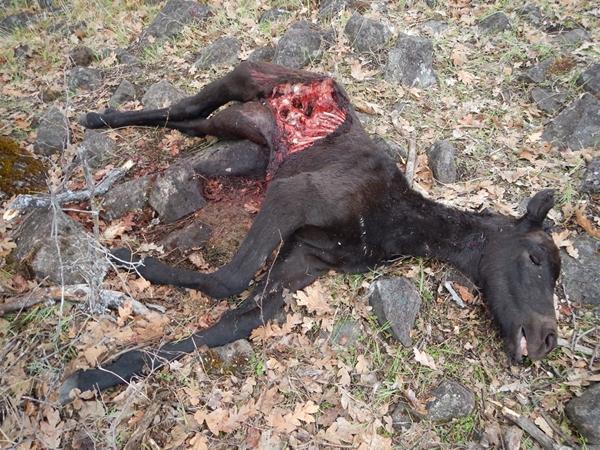
7) Myth: Wild horses are not native to America.
Truth: As professor Ross MacPhee says; “wild horses are as American as apple pie” and are without doubt native to North America, having originated here.
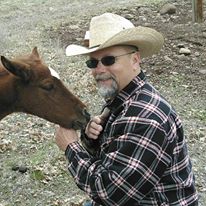
Mr. William E. Simpson II and his wife are well-known in wild horse advocacy circles as a result of their living among wild (feral) horses for the past 4-years in a privately-owned forested ecosystem (near the Soda Mountain Wilderness Area), which they protect. Mr. Simpson has a background in business, science and livestock, and has a working understanding of the behavior and habits of wild horses in the wilderness.
Free Range Report
Thank you for reading our latest report, but before you go…
Our loyalty is to the truth and to YOU, our readers!
We respect your reading experience, and have refrained from putting up a paywall and obnoxious advertisements, which means that we get by on small donations from people like you. We’re not asking for much, but any amount that you can give goes a long way to securing a better future for the people who make America great.
[paypal_donation_button]
For as little as $1 you can support Free Range Report, and it takes only a moment.
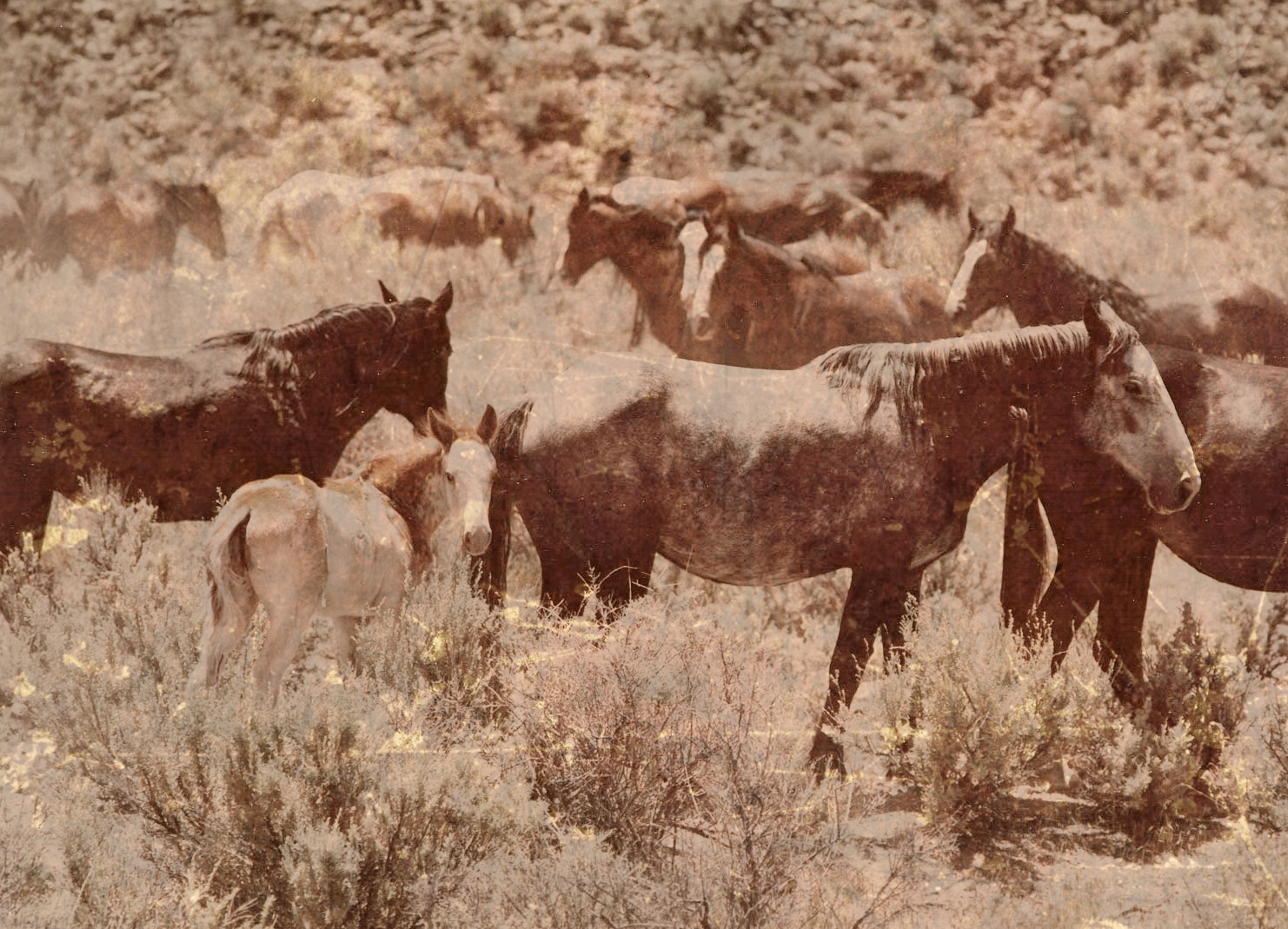
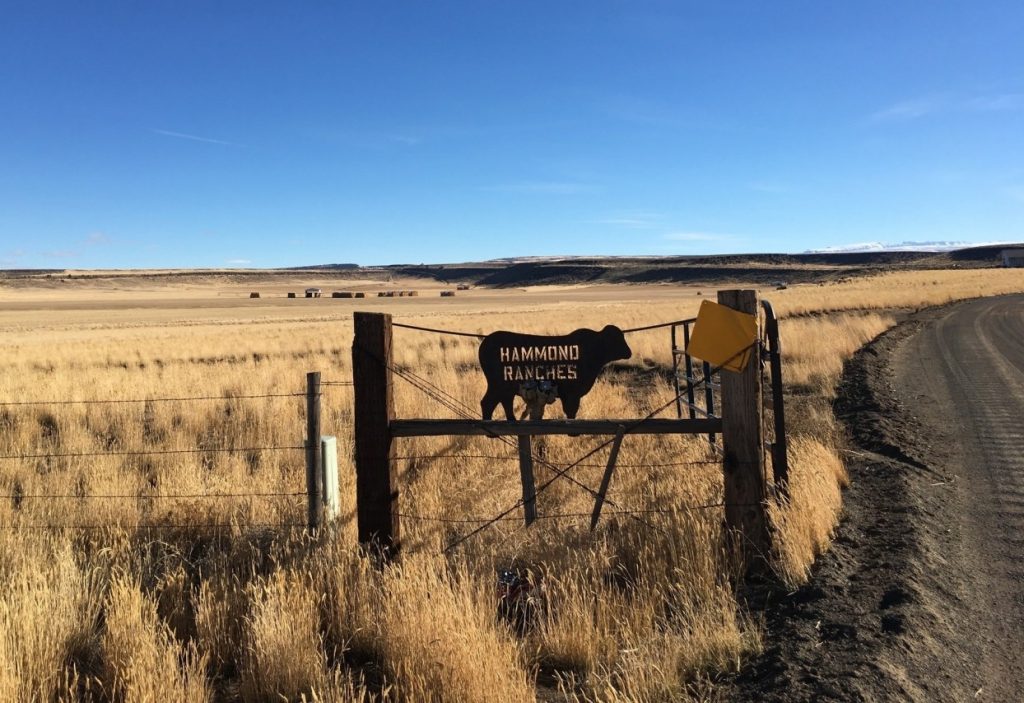
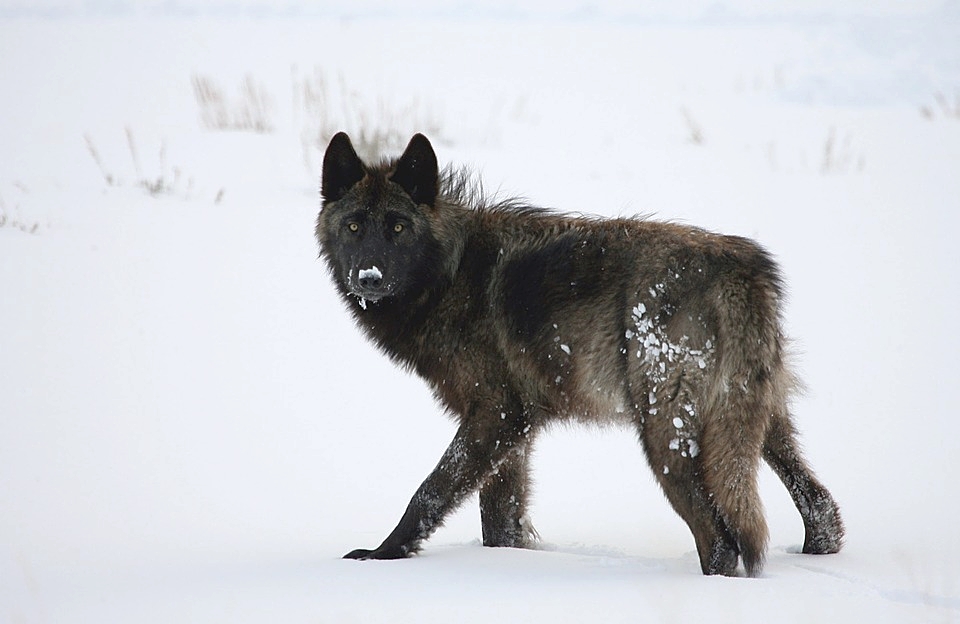
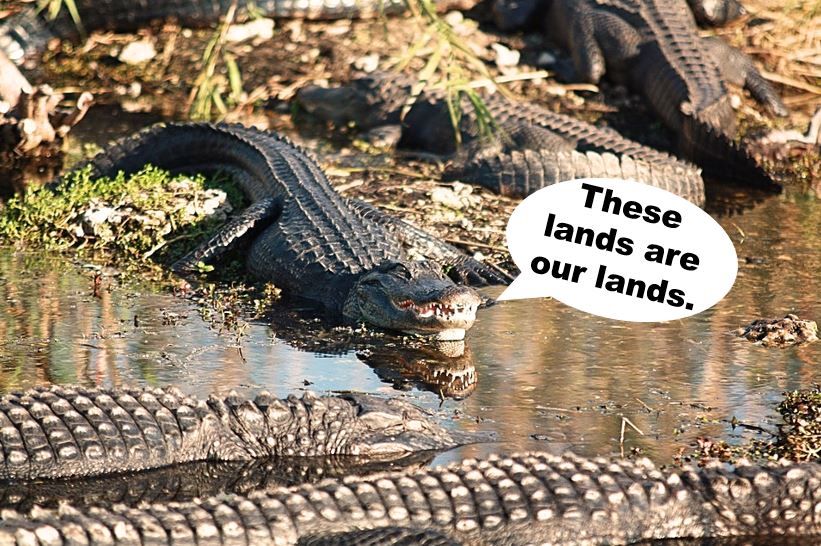
So, just wondering… are you providing the MacPhee-Simpson piece in the spirit of “just post it and let the reader decide”?
Absolutely. We’re secure in our positions and are unafraid of allowing opposing viewpoints to be expressed.
I really appreciate your report…have shared it with many people…I know there are many people that are as uneducated as I am and believe the BLM…Thank you ruth
Understood. It is most telling that Simpson believes that he is helping his point of view. Except, of course, among the uneducated.
Interesting report, but very bias! I would not reference this report or use it to make any changes in horse management objectives in Oregon. This report is nothing more than a bid to increase wild horse population and reduce domestic livestock grazing, but is portrayed as a serious Ecological study? Hardly!
If people are only fixated on a few mundane aspects of life, like livestock, then they lose sight of Life’s Greater Whole!
Few people consider having sufficient, nutritious food “mundane.”